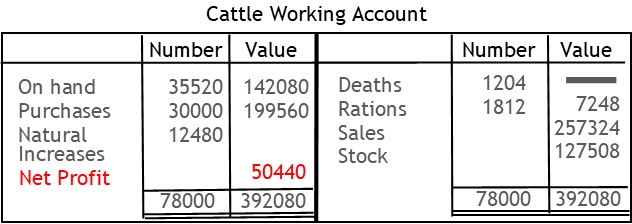Livestock Working Account
What is a Livestock Working Account?
A livestock working account shows details of where livestock came from—what happened to them—and how much profit the farm made from them in a period.
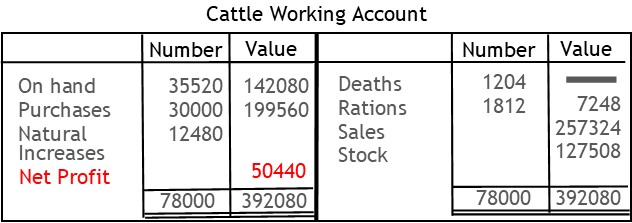
How it Works
The farm will start the accounting period with a certain amount of livestock.
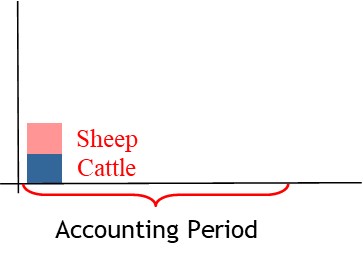
During the period, they may buy more livestock.
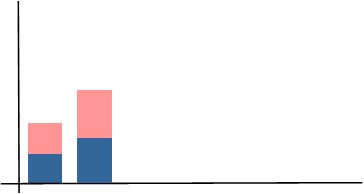
On top of this, there will be natural increase.
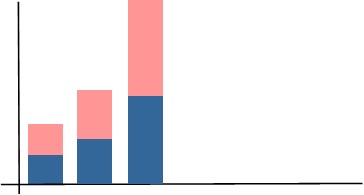
Some will die.
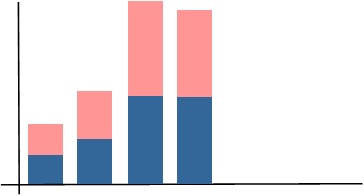
Some will be used for rations—or food for the farm owners or employees.
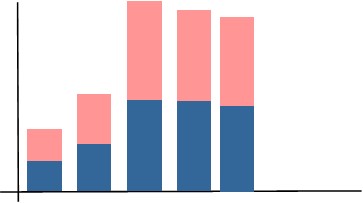
Finally, some will be sold during the period.
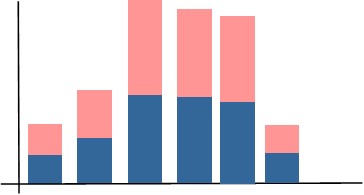
This will leave the farm with a closing stock, as at the end of the accounting period.
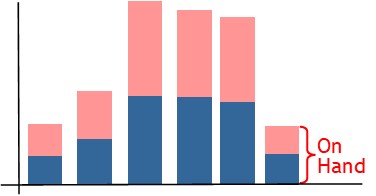
To calculate the profitability of each livestock class, farm management rely upon livestock working accounts.
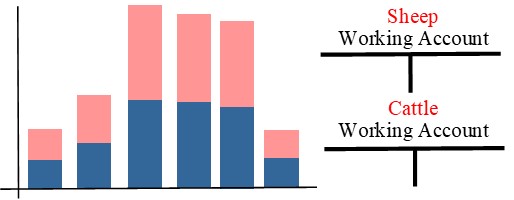
Livestock working accounts are a different to other accounts.
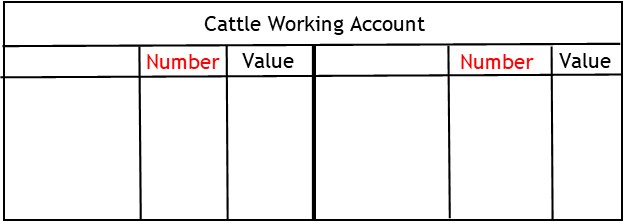
They have a column for livestock numbers as well as one for livestock value.

Besides this, the livestock working account works the opposite way around to other accounts.
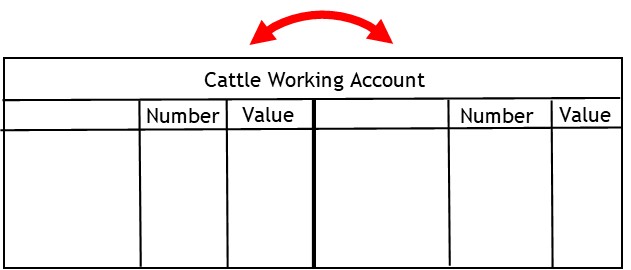
The debit side shows where the livestock came from.
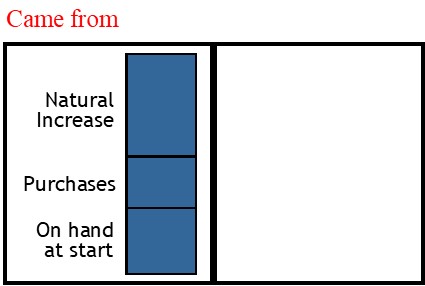
The credit side shows what happened to that livestock.
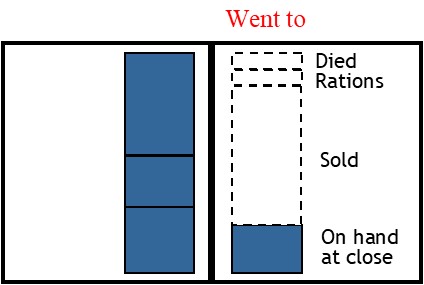
Some of the information for the account comes from the farm’s accounting records.
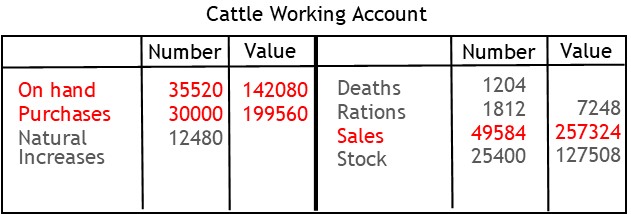
While the remaining information comes from the farm’s livestock records.

Stock On Hand At Start
When preparing the working account, you begin by transferring the value for stock on hand to the account.
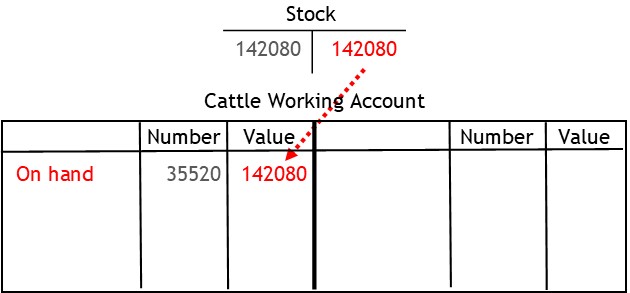
You obtain the number of stock on hand from the farm’s records.

Once updated, the account shows stock on hand at the beginning of the period.
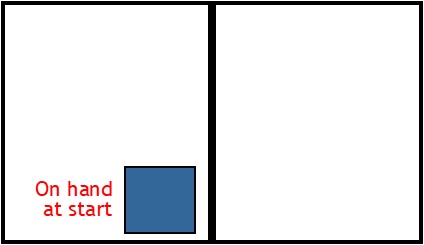
Purchases
Next, you transfer the value of purchases to the account.
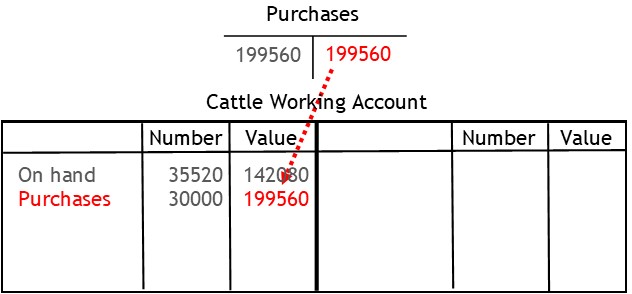
This shows how much livestock was purchased during the period.
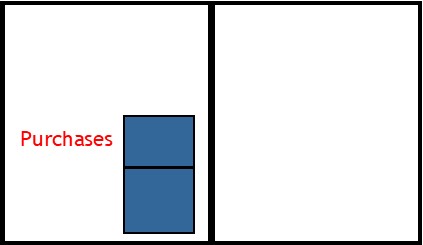
Natural Increase
Finally, the working account also needs to show natural increases.
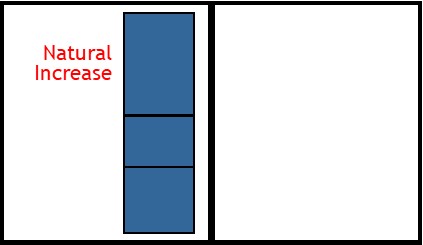
However, as new born cost nothing to acquire, you don’t assign a value for them.

Instead, you simply record the number of livestock born, obtainable from the farm’s records.

Deaths
As with natural increase, you don’t assign a value to livestock deaths either.

You simply record the number of deaths, once again obtainable from farm records.

By crediting the working account, you show the reduction in stock numbers due to deaths
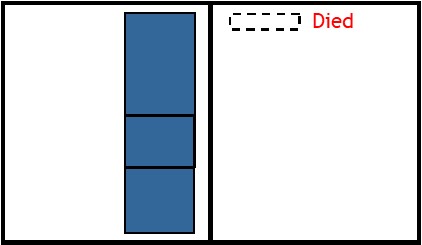
Rations
Livestock killed for rations also reduces stock numbers.
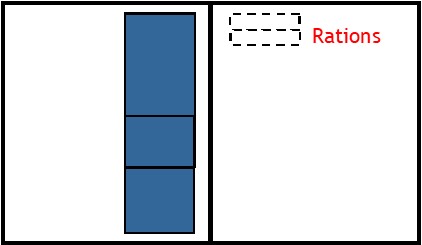
As rations reduce the total value of livestock on the farm, it is considered an expense
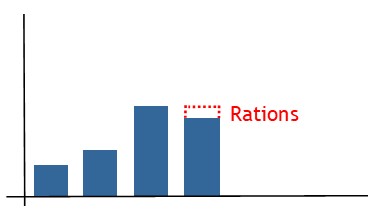
To show this expense, you credit the working account.

In this case, you assign a value, typically the average cost as at the last period.

Then you also debit the rations expense account with this amount.
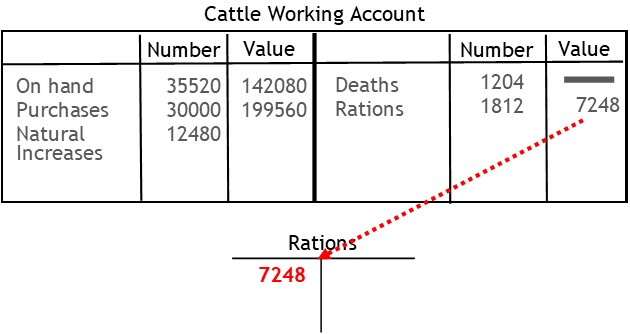
Sales
The working account also needs to show how many livestock were sold during the period.
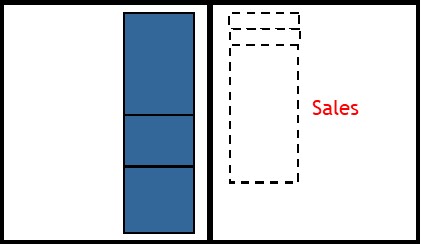
For this, you transfer the sales value from the sales account to the working account.
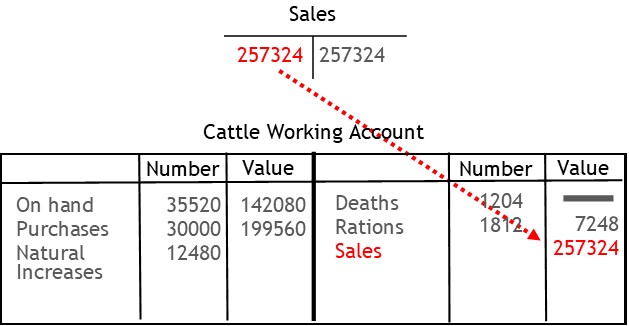
Stock On Hand At Close
Finally, the working account needs to show stock at close.
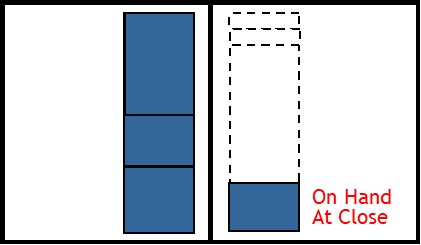
Here, you find closing stock from the farm’s records and credit the working account with its value.

At the same time, you debit the stock account..
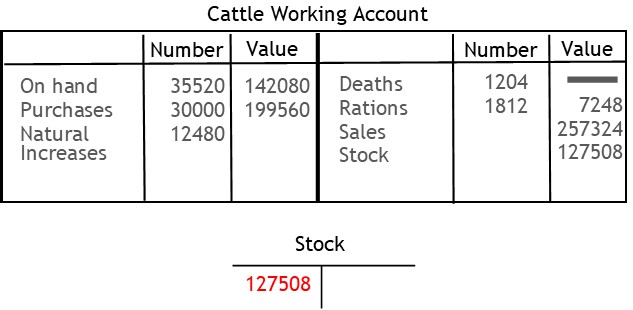
Net Profit
Now all remains to be done is to find the working account’s balance.
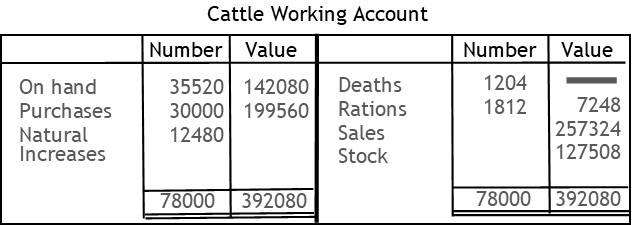
This will show net profit for the period.
